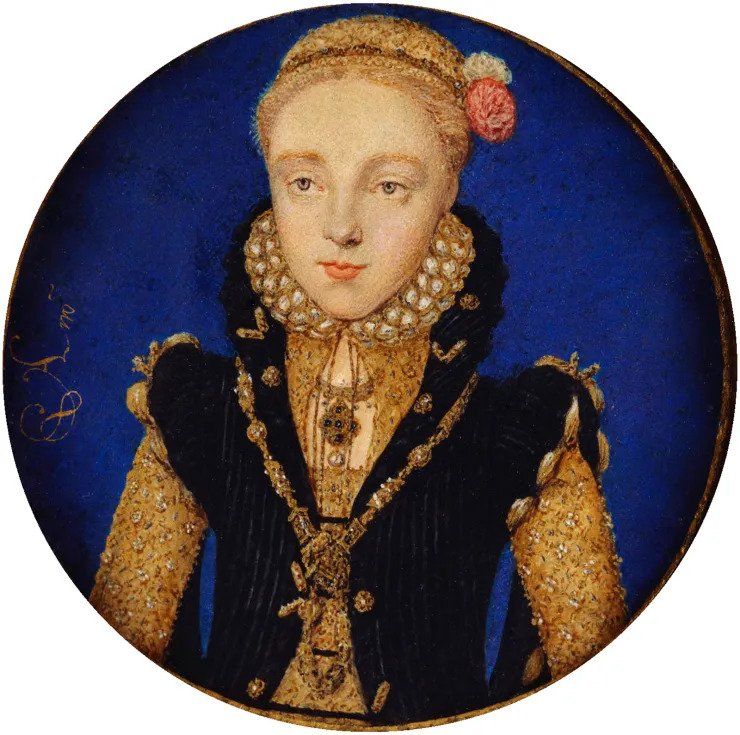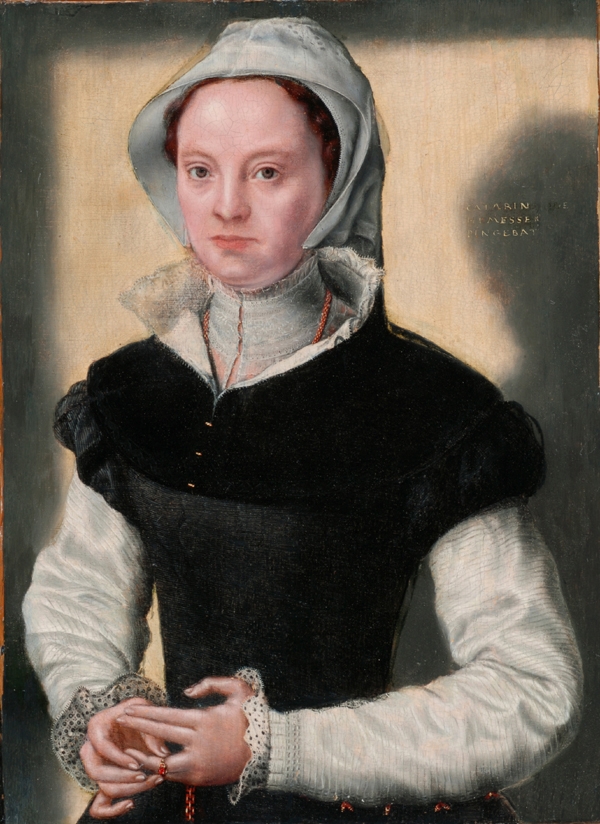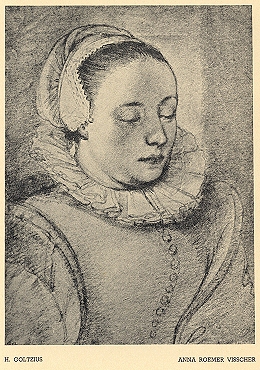|
List Of 16th-century Women Artists
16th-century women artists – female painters, miniaturists, manuscript illuminators, calligraphers, engravers and sculptors born between 1500 and 1600. Asia China * Ma Shouzhen (c. 1548–1604) – Gējì and artist, painter, poet, and composer. * Xue Susu (c.1564–1650? C.E.) – Gējì, poet, painter, archer. * Qiu Zhu (fl. 1565–1585) – painter, daughter of painter Qiu Ying. Japan * Ono Otsū (1559 or 1568–1631) – noblewoman, calligrapher, poet, painter and musician. Europe Italy :See: List of Italian Renaissance female artists Netherlands * Marguerite Scheppers (active from 1501 onward) – miniaturist. * (d. 1540) – miniaturist, pupil of Marguerite Scheppers * Susannah Hornebolt (1503–c. 1554) – daughter of painter Gerard Hornebolt, gentlewoman attendant to queen Jane Seymour. First known female artist in England. * Levina Teerlinc (1510s – 23 June 1576) – miniaturist who served as a painter to the English court. Daughter of pai ... [...More Info...] [...Related Items...] OR: [Wikipedia] [Google] [Baidu] |
Levina Teerlinc Elizabeth I C 1565 B
Levina is both a surname and a given name. Notable people with the name include: Surname: * Elizaveta Levina, Russian-American statistician * Olga Levina (other), multiple people ** Olga Levina (handballer), (born 1985), Russian handball player * Tatyana Levina (born 1977), Russian sprinter * Yuliya Levina (born 1973), Russian rower * Zara Levina (1906–1976), pianist and composer Given name: * Levina (singer) (born 1991), German singer, born Isabella Lueen * Levina Teerlinc, Flemish miniaturist See also * , an Indonesian passenger ferry * Levin (other) Levin may refer to: * Levin (given name) * Levin (surname) * Levin, New Zealand, a town in southern North Island * Toyota Corolla Levin, an automobile * Levin (guitar company), Sweden * Konstantin Dmitrievitch Levin, a character in Tolstoy's Anna ... {{given name, type=both Russian-language surnames Russian-Jewish surnames ... [...More Info...] [...Related Items...] OR: [Wikipedia] [Google] [Baidu] |
Catharina Van Hemessen
Caterina or Catharina van Hemessen (1528 – after 1565) was a Flemish Renaissance painter. She is the earliest female Flemish painter for whom there is verifiable extant work. She is mainly known for a series of small-scale female portraits completed between the late 1540s and early 1550s and a few religious compositions.Jones, 136 Van Hemessen is often given the distinction of creating the first self-portrait of an artist (of either gender) depicted seated at an easel. This portrait, created in 1548, shows the artist in the early stages of painting a portrait and is now part of the collection of the Kunstmuseum Basel.Kemperdick, 15 Other paintings by van Hemessen are in the Rijksmuseum in Amsterdam and in the National Gallery, London. A number of obstacles stood in the way of women of her time who wished to become painters. Their training would involve both the dissection of cadavers and the study of the nude male figure while the system of apprenticeship meant that the ... [...More Info...] [...Related Items...] OR: [Wikipedia] [Google] [Baidu] |
Esther Inglis
Esther Inglis ( or ) (1571–1624) was a skilled member of the artisan class, as well as a miniaturist, who possessed several skills in areas such as calligraphy, writing, and embroidering. She was born in 1571 in either LondonFrye, Susan. 2010. "Chapter Two: Miniatures and Manuscripts: Levina Teerlinc, Jane Segar, and Esther Inglis as Professional Artisans." Pens and Needles Women's Textualities in Early Modern England. Philadelphia: U of Pennsylvania. p. 103. Retrieved 6 December 2014 or in DieppeRoss, Sarah G. 2009. "Esther Inglis: Linguist, Calligrapher, Miniaturist, and Christian Humanist." Early Modern Women and Transnational Communities of Letters. By Julie D. Campbell and Anne R. Larsen. Farnham, England: Ashgate. p. 159. Retrieved 6 December 2014 and was later relocated to Scotland, where she was later raised and married. Sharing similarities with Jane Segar, Inglis always signed her work and frequently included self-portraits of herself in the act of writing.Frye, Sus ... [...More Info...] [...Related Items...] OR: [Wikipedia] [Google] [Baidu] |
Elizabeth Lucar
Elizabeth Lucar (née Withypoll; 1510 – 29 October 1537) was an English calligrapher. In addition to her calligraphic skills she was fluent in Latin, Spanish, and Italian, and was an accomplished musician, needleworker and algorism, algorist. A member of a prominent and wealthy mercantile family holding royal favour and civic office, her marriage united common interests within the Worshipful Company of Merchant Taylors, Company of Merchant Taylors. Epitaph Elizabeth Lucar was born and died in London and is largely known from an inscription on her tomb in St Laurence Pountney church, London, written or commissioned by her husband Emanuel Lucar (1494–1574). This was recorded by John Stow. "Every Christian heart seeketh to extoll The glory of the Lord, our onely Redeemer: Wherefore Dame Fame must needs inroll Paul Withypoll his childe, by love and Nature, Elizabeth, the wife of Emmanuel Lucar, In whom was declared the goodnesse of the Lord, With many high vertues, which tru ... [...More Info...] [...Related Items...] OR: [Wikipedia] [Google] [Baidu] |
William Segar
Sir William Segar (c. 1554–1633) was a portrait painter and officer of arms to the court of Elizabeth I of England; he became Garter King of Arms under James I. Like other artists of the Tudor court, Segar was active in more than one medium, painting portraits of luminaries of the court in addition to his duties in the College of Arms. He painted Elizabeth's favourite the Earl of Essex in his "Sable sad" (black) armour for the Accession Day tilt of 1590. The famous "Ermine Portrait" of Elizabeth is sometimes attributed to Segar. Personal life William Segar may have been the son of one Nicholas Segar or of Francis Nycholson, alias Seager, who became a freeman of the Stationers' Company in 1557. Once thought to be of Dutch origin, Segar is now believed to have been born in England of an English mother. Segar stated his age as "fifty or thereabouts" in a document dated 13 September 1604. By 1584 William had married Helen Somers, and had three sons and three daughters. By 1596 ... [...More Info...] [...Related Items...] OR: [Wikipedia] [Google] [Baidu] |
Jane Segar
Jane may refer to: * Jane (given name), a feminine given name * Jane (surname), related to the given name Film and television * ''Jane'' (1915 film), a silent comedy film directed by Frank Lloyd * ''Jane'' (2016 film), a South Korean drama film starring Lee Min-ji * ''Jane'' (2017 film), an American documentary film about Jane Goodall * ''Jane'' (2022 film), an American psychological thriller directed by Sabrina Jaglom * Jane (TV series), an 1980s British television series Music * ''Jane'' (album), an album by Jane McDonald * Jane (American band) * Jane (German band) * Jane, unaccompanied and original singer of " It's a Fine Day" in 1983 Songs * "Jane" (Barenaked Ladies song), 1994 * "Jane", a song by Ben Folds Five from their 1999 album '' The Unauthorized Biography of Reinhold Messner'' * "Jane" (Century song) * "Jane", a song by Elf Power * "Jane", a song by EPMD from '' Strictly Business'' * "Jane" (Jefferson Starship song), 1979 * "Jane", a song by the Loved ... [...More Info...] [...Related Items...] OR: [Wikipedia] [Google] [Baidu] |
Maria Tesselschade Visscher
Maria Tesselschade Roemers Visscher, also called Maria Tesselschade Roemersdochter Visscher or Tesselschade (25 March 1594 – 20 June 1649) was a Dutch poet and glass engraver. Life Tesselschade was born in Amsterdam, the youngest of three daughters of poet and humanist Roemer Visscher. She was given the name ''Tesselschade'' ("Damage on Tessel"), because her father lost ships near the Dutch island Texel on Christmas Eve 1593, three months before her birth, to remember that 'worldly wealth could be gone instantly.' She and her sister Anna Visscher were the only female members of the Muiderkring, the group of Dutch Golden Age intellectuals who met at Muiden Castle. She is often characterised as a muse of the group and attracted the admiration of its members, such as its organiser Hooft, Huygens, Barlaeus, Bredero, Heinsius, Vondel and Jacob Cats. In their correspondence, she is described as attractive, musically talented, and a skilled translator and commentator ... [...More Info...] [...Related Items...] OR: [Wikipedia] [Google] [Baidu] |
Anna Tymansdr
Anna may refer to: People Surname and given name * Anna (name) Mononym * Anna the Prophetess, in the Gospel of Luke * Anna (wife of Artabasdos) (fl. 715–773) * Anna (daughter of Boris I) (9th–10th century) * Anna (Anisia) (fl. 1218 to 1221) * Anna of Poland, Countess of Celje (1366–1425) * Anna of Cilli (1386–1416) * Anna, Grand Duchess of Lithuania (died 1418) * Anne of Austria, Landgravine of Thuringia (1432–1462) * Anna of Nassau-Dillenburg (died 1514) * Anna, Duchess of Prussia (1576–1625) * Anna of Russia (1693–1740) * Anna, Lady Miller (1741–1781) * Anna Russell, Duchess of Bedford (1783–1857) * Anna, Lady Barlow (1873–1965) * Anna (feral child) (1932–1942) * Anna (singer) (born 1987) Places Australia * Hundred of Anna, a cadastral district in South Australia Iran * Anna, Fars, a village in Fars Province * Anna, Kohgiluyeh and Boyer-Ahmad, a village in Kohgiluyeh and Boyer-Ahmad Province Russia * Anna, Voronezh Oblast, an urban locality ... [...More Info...] [...Related Items...] OR: [Wikipedia] [Google] [Baidu] |
Clara Peeters
Clara Peeters (active 1607–1621) was a Flemish still-life painter from Antwerp who worked in both the Spanish Netherlands and Dutch Republic. Peeters is the best-known female Flemish artist of this era and one of the few women artists working professionally in seventeenth-century Europe, despite restrictions on women's access to artistic training and membership in guilds. Peeters specialized in still-life paintings with food and was prominent among the artists who shaped the traditions of the Netherlandish ''ontbijtjes'', "breakfast pieces," scenes of food and simple vessels, and ''banketjes'', "banquet pieces" with expensive cups and vessels in precious metals. Life Details of Peeters' life are unclear. It is generally agreed by scholars that her work points to her being a native of Antwerp. The city of Antwerp's archives hold a record of a Clara Peeters, daughter of Jean (Jan) Peeters, baptized on 15 May 1594 in the Church of St. Walburga in Antwerp.Harris, Ann Sutherland, ... [...More Info...] [...Related Items...] OR: [Wikipedia] [Google] [Baidu] |
Anna Visscher
Anna Roemers Visscher (c. 2 February 1583 – 6 December 1651) was a Dutch artist, poet, and translator. Biography Anna Roemers Visscher was the eldest daughter of Amsterdam merchant and poet Roemer Visscher and the sister of Maria Tesselschade Visscher. Her family's economic and social status in Amsterdam enabled Visscher to be schooled in languages, calligraphy, embroidery, drawing, painting, glass engraving and other arts. Visscher married Dominicus Booth van Wesel in 1624. In 1646, they moved with their two sons Roemer and Johan to Leiden. Visscher lived during the Renaissance when women poets were often praised for who they were more than for their literary work. She was amongst the group of artists, writers and musicians who formed the Muiderkring or Muiden Circle. She was highly admired by the artistic elite such as P. C. Hooft, Jacob Cats, Joost van den Vondel, Constantijn Huygens and others. They called her a muse, the second Sappho, a fourth grace and more, and often ... [...More Info...] [...Related Items...] OR: [Wikipedia] [Google] [Baidu] |
Hendrik Van Den Keere
Hendrik van den Keere (c. 1540–2 – 1580) was a sixteenth-century punchcutter, or cutter of punches to make metal type, who lived in Ghent in modern Belgium. Career Van den Keere was the son of Ghent printer and schoolmaster Hendrik van den Keere the Elder, and his career has sometimes been confused with that of his father. Both he and his father used the name "Henri du Tour" in French. Van den Keere's grandfather had taken over the type foundry of Joos Lambrecht. In 1566 he took over his father's printing firm, but soon gave up printing and began to specialise in punchcutting. From 1568 he worked particularly for Christophe Plantin of Antwerp, who operated a gigantic printing concern by contemporary standards. Van den Keere stayed living in Ghent, up the River Scheldt from Antwerp. He was Plantin's sole typecaster from 1569 onwards. Over the course of his career he cut around 30 typefaces. Types Van den Keere primarily cut punches in the textura style of blacklet ... [...More Info...] [...Related Items...] OR: [Wikipedia] [Google] [Baidu] |
Colette Van Den Keere
Colette van den Keere (sometimes known as Colette Hondius after her marriage) (1568–1629) was a Dutch engraver who was the sister of engraver Pieter van den Keere. She married his master, the cartographer Jodocus Hondius in 1587 and she ran the family business for several years. She is credited with engraving a posthumous portrait of her husband. Biography Colette van den Keere was born in Ghent in The Netherlands around 1568, the daughter of foundry artist Hendrik van den Keere, also named Henry du Tour, and Elisabeth van Estelaer. Colette's family, Protestant refugees, temporarily settled in London, England, between 1584 and 1593 after which the family returned to Amsterdam to live permanently. Colette van den Keere married Jodocus Hondius in London on 11 April 1587 and gave birth to eight children including two sons who also became cartographers, Jodocus Hondius the Younger and Hendrik Hondius the Younger. Some of her daughters married cartographers, including one who ... [...More Info...] [...Related Items...] OR: [Wikipedia] [Google] [Baidu] |


.jpg)





